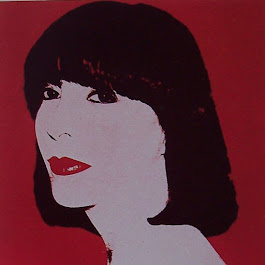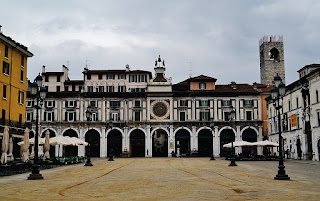Corradino D'Ascanio - engineer
Aeronautical genius famed for helicopters and the Vespa scooter
Corradino D'Ascanio, the aeronautical engineer whose design for a clean motorcycle turned into the iconic Vespa scooter and who also designed the first helicopter that could actually fly, was born on this day in 1891 in Popoli, a small town about 50km inland of Pescara. The engineer, whose work on aircraft design during the Second World War saw him promoted to General in the Regia Aeronautica, was always passionate about flight and might never have become involved with road vehicles had he not been out of work in the post-War years. His scooter would have been built by Lambretta had he not fallen out with the company founder, Ferdinando Innocenti, in a dispute over his design. Instead, D'Ascanio took his plans to Enrico Piaggio, with whom he had worked previously in the aeronautical sector. Piaggio saw in D'Ascanio's scooter an irresistible opportunity to revive his ailing company and commissioned the design, which became known as the Vespa after Piaggio remarked that its body shape resembled that of a wasp. Read more…
___________________________________________________________
Teresa Mattei - partisan and politician
Former Communist who led Italian Women’s Union
The politician and former partisan Teresa Mattei, who was the youngest member of the Constituent Assembly that formed Italy’s post-War government and later became a director of the Unione Donne Italiane (Italian Women’s Union), was born on this day in 1921 in Genoa. After being expelled from the Italian Communist Party (PCI) in 1957, Mattei became a leading advocate of the rights of children as well as women and later campaigned for the prosecution of war criminals. As a prominent executive of the UDI she was influential in the adoption of mimosa as the symbol of International Women’s Day, which takes place on March 8 each year, arguing that because the flower proliferated in the countryside it represented a more accessible alternative to violets and orchids. The daughter of a lawyer who was prominent in the anti-Fascist Partito d’Azione (Action Party), Mattei herself was a active member of the Italian Resistance during the Second World War, using the nom de guerre "Partigiana Chicchi". Read more…
_________________________________________________________
Renata Tebaldi – opera singer
Performer with a beautiful lirico soprano voice
Opera singer Renata Tebaldi was born on this day in 1922 in Pesaro. Said by the conductor Arturo Toscanini to possess ‘the voice of an angel’, Tebaldi had a long stage career and made numerous recordings. Her parents had separated before her birth and she grew up in the home of her maternal grandparents in Langhirano in the province of Parma in Emilia-Romagna. Tebaldi was stricken with polio at the age of three but later became interested in music and sang in the church choir. She was sent to have piano lessons but the teacher decided she should study singing instead and arranged for her to attend the conservatory in Parma. She later transferred to Liceo Musicale Rossini in Pesaro. Tebaldi made her stage debut in 1944, while Italy was still at war, in Arrigo Boito’s Mefistofele at the Teatro Sociale in Rovigo but her beautiful voice first began to attract attention in 1946 when she appeared as Desdemona in Giuseppe Verdi’s Otello in Trieste. She auditioned for Toscanini who was immediately impressed. Read more…
_________________________________________________________
Francesco Maria Veracini – violinist
Virtuoso performer was prolific composer
One of the great violinists of the 18th century, Francesco Maria Veracini, was born on this day in 1690 in Florence. He was to become famous throughout Europe for his performances and for a while he was Handel’s biggest rival as a composer. Veracini was born into a musical family, although his father was a pharmacist and undertaker. His grandfather, Francesco, had been one of the first violinists in Florence and had a music school business, which he eventually passed on to his son, Antonio, who was Francesco’s teacher. Veracini grew up in Florence but by 1711 he had established himself in Venice where he played in church orchestras. In 1712 on February 1, his 22nd birthday, he performed a violin concerto of his own composition in the church of Santa Maria Gloriosa dei Frari in honour of the visit to Venice of the Austrian ambassador. This is the first recorded public performance by Veracini playing one of his own compositions. At about that time, one of his performances so impressed the violinist, Giuseppe Tartini, that he decided to take time off to study better use of the bow in Ancona. Read more…
































